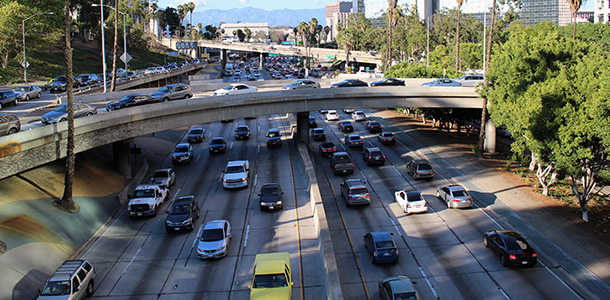
(Photo Credit: coolcaesar/Wikimedia)
Mark Pisano is a professor of public administration at the University of Southern California Sol Price School of Public Policy. For 31 years, he served as executive director of the Southern California Association of Governments (SCAG), the nation’s largest regional planning agency. He is the author of The Puzzle of the American Economy, which describes how demographic transformations will place a drag on economic growth and increase stress on public budgets. This is part one of four columns on what these changes mean for California's future.
Climate change gets a lot of attention. So does the steady march of technology – self-driving cars, drone aircraft, robot-staffed warehouses. The Internet of everything and global connectivity are changing all of our assumptions about what we produce and consume – whether we will be among the winners or the losers.
But beneath those headlines, lie demographic trends that will be just as disruptive, and in some ways more. Simply put, the population of California and the nation are growing slower and older. These immutable forces are reducing total income, total consumption and total tax revenue in ways this nation has never seen.
For those who have long prioritized population control and growth management, the sun is rising. But as I explain in my recent book, The Puzzle of the American Economy: How Changing Demographics Will Affect Our Future and Influence Our Politics, there are storm clouds on the horizon.
The growth in the working age population has almost come to a standstill. In this decade and in the next two decades, growth will be half of that in the previous 30 years. Women are simply having fewer babies – from an average of 3.8 per woman to two.
At the same time, most of the remaining population growth – 64 percent – will be people over 65 years. We are living longer – seven years longer on average and globally 11 years. And that trend overwhelms the lower birth and immigration rates.
So, what are the implications? The data are clear: As we age past 55, our incomes, our consumption and the taxes we pay all decline – reversing the steady increases in income, consumption and taxpaying of our early years. The shape of this curve has been remarkably stable over several decades. That part is straightforward.
But different generations grow at different rates. So when one compares the decade-by-decade growth of the past 30 years and the future 30 years, the results are startling. We have many more older people – all making, spending and contributing less; and fewer working age people contributing more. With 324 million people in the nation and 39.8 million people in California, we are experiencing fiscal decline by millions of individual cuts.
Let’s call that the “demographic income penalty.” In 2016 this penalty came to $646 billion that was not added to the nation’s GDP, which otherwise would have been $19.2 trillion. Without the penalty, the nation’s GDP growth rate would have been over 4 percent – what President Obama’s Economic Council forecasted – and not the 2 percent that was achieved. The GDP effects in California would have been similar.
This loss in economic growth could have altered the national politics in the country. It certainly altered public revenues, in an exaggerated way. While this demographic trend reduced the growth in income by 24.7 percent per year, it reduced the growth in taxes paid by 45.8 percent. Taxes not realized in 2016 represented $268 billion – federal, state and local – or 13.5 percent of all taxes paid by individuals to government that year. It is important to note that taxes paid by individuals make up 90 percent of governmental revenues. Let’s call that the “demographic tax revenue penalty.”
These economic and fiscal impacts will grow at a compounding rate in the years and decades ahead of us, further straining our politics and our governments at all levels.
The demographic transformation that is occurring provides the foundational assumptions for the economic performance in the nation and in California. These predictable demographic implications help explain many of the puzzling economic quandaries: why growth is so slow, why public budgets are under increasing stress, and why our incomes are not growing.
 They also describe the fundamental fiscal assumptions that government will be faced with as we struggle to deal with the fiscal sustainability challenges of our time – for our country, state and local governments.
They also describe the fundamental fiscal assumptions that government will be faced with as we struggle to deal with the fiscal sustainability challenges of our time – for our country, state and local governments.
In addition to identifying these demographic transformations, I also developed strategies that flow from them that could be helpful in crafting policy responses to alter this course.
In future blogs, I will discuss how these demographic transformations and strategies could be helpful to further refine the goals and strategies of California’s Economic Summit.
Read Part 2 of the series: No One is Disposable: Growing California’s working population critical to future economy

